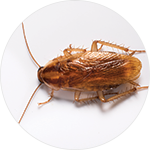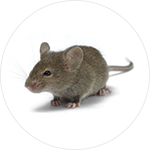Common Pests Found in Food Plants and What You Can Do to Prevent Them
GERMAN COCKROACH
German cockroaches can be particularly common in wet processing plants in areas where there is moisture and heat.
Prevention Tips for German Cockroaches
-
Inspect incoming shipments to prevent introductions of the pest into the facility.
-
Remember that German cockroaches can be introduced by employees. Have a dedicated area for employees to keep personal belongings and monitor the area for pests like the German cockroach.
-
Seal cracks and crevices to reduce shelter. The less available harborage, the fewer cockroaches. However, if you can’t effectively seal them out of an area, keep the area open and allow for easy inspection and treatment.
-
Minimize the use of corrugated cardboard for long term storage of items. German cockroaches like the corrugations and folds that a cardboard box provides. Cardboard is not cleanable. It is better to use clear plastic totes or bins with lids. The clear plastic will allow you to see inside and the lid and help prevent pest access.
-
Make sure leaks are repaired promptly. Reducing moisture and water can be helpful in reducing their ability to survive.
-
Reduce clutter. Clutter makes it difficult to inspect areas for pests like cockroaches.
STORED PRODUCT PESTS
Stored Product Pests can enter a plant from the exterior, be introduced in incoming shipments, or can breed in stored food or food spills and accumulations inside the plant. Most of the stored product pests are either beetles or moths.
Prevention Tips for Stored Product Pests
-
Use the first in, first out system of stock rotation. The longer a product remains in inventory, the more likely it is to become infested with stored product pests.
-
Structural design is critical for limiting these pests. The hard to clean areas are where the stored product pests will become established. Areas like suspended ceilings or cement block walls in a dry processing facility are areas of concern when it comes to stored product pests.
-
Don’t overlook areas like electrical panels, the interior of ducts and juncture boxes in master cleaning schedules. Anywhere that product can collect are areas where stored product pests will develop.
-
Many of the stored product pests like the Indianmeal moth and the warehouse beetle can come from the exterior. These pests can come from neighboring farms and residential bird feeders. Keeping doors closed and sealed are important steps for prevention. Vents can be another important point of introduction.
-
Old processing equipment stored for future use should be cleaned prior to storage.
-
Rack legs in warehouses can be difficult to clean and may be an area of stored product pest development. Racking should be designed with cleaning in mind.
-
If partial ingredient bags are stored on site, place opened bags in bins or place a clear bag over it to protect contents and make the bag content more difficult for pests to access.
-
Clean up spills promptly and have a program in place for the proper handling of damaged bags and containers.
-
If compressed air must be used in cleaning, use with care. Compressed air can move food particles and insects during cleaning which can spread insects into areas which may be harder to access.
-
Keep floor expansion joints sealed to facilitate cleaning floors and preventing food debris accumulations in crack.
RODENTS
Mice and rats can be found around the exterior of plants as well as inside. Norway rats are more likely to prefer a soil connection, if possible. House mice will look for warm, undisturbed voids and roof rats will most commonly be found in attics and roof lines
Prevention Tips for Rodents
-
Rodents are found outside food plants and distribution centers. Exclusion is equally if not more important for rodent pests. Mice and rats can come in on shipments as well as from the exterior environment. Mice do not have a water requirement and can easily be brought in on dry product shipments. As long as they have the food and harborage afforded by that pallet, they can remain inside the pallet stack for a long period of time. It is critical to inspect and find pallet mice before they become established in the facility.
-
Maintain 18” sanitation aisles along inside perimeter walls for the purpose of creating inspection zones and areas where rodent monitors and control devices can be placed.
-
Keep floors well sealed including expansion joints. Both mice and rats will live beneath the slab and come up through expansion joints, especially those around support columns.
-
Rodent inspections must include suspended ceilings and roofs. Mice and rats can enter buildings on upper floors and not just at ground level.
-
Avoid the use of expandable foams as standalone sealants. Rodents can chew through these materials. Instead use stainless steel meshes or a combination of stainless steel mesh and high density foam. A sealant sandwich can be made using a layer of high density foam with a layer of stainless steel, tucked in between a second layer of foam. This strategy is particularly useful when sealing cracks in floor expansion joints.



